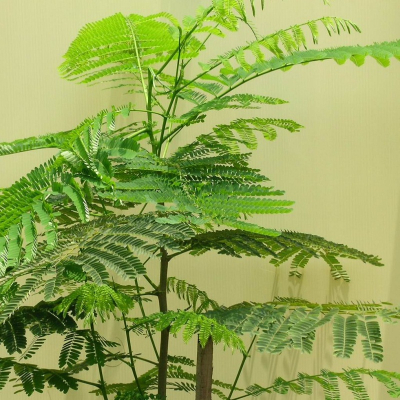Distribution and habitat: India, Burma, Sri Lanka, Africa and Australia
Botany: A medium to large sized unarmed deciduous tree about 20 m in height with an umbrella shaped crown and grey to dark brown rough irregularly cracked bark.
- Leaves: Abruptly bipinnate, main rachis with a large gland above the base and one below the uppermost pinnae, pinnae 2-4 pairs, leaflets 5-9 pairs with glands between their bases, the lateral ones elliptic-oblong, the two terminal ovate-oblong, all unequal sided
- Flowers: White, fragrant, in globose umbellate heads; Calyx 4 mm long, pubescent, corolla 1 cm long, tube glabrous, stamen much longer than the corolla. Filaments are connate at the base into short tube.
- Fruits: Long, characteristic pods, bluntly pointed, thin, pale yellow, smooth, shiny, reticulately veined above the seed, seeds 4-12, pale brown, ellipsoid, oblong, compressed.
Properties: Immunomodulator, hypoglycaemic, anticancer, expectorant, anodyne aphrodisiac, anti inflammatory, ophthalmic.
Chemical constituents: Melanoxetin, okanin, phytosterol, flavanoids, triterpenes, lebbekanin
- Flowers contain saponin, triterpene and saponin glycosides.
- Leaves afford caffeic acid, kaempferol, myricitrin, quercetin, robin, rutin.
Uses: It is used in all types of poisoning, in skin eruptions, leprosy, leucoderma and wounds. The flowers are useful in chronic cough and bronchitis.
Formulations: Maha shrishagada, Sirisharishta
Propagation: By seeds.

